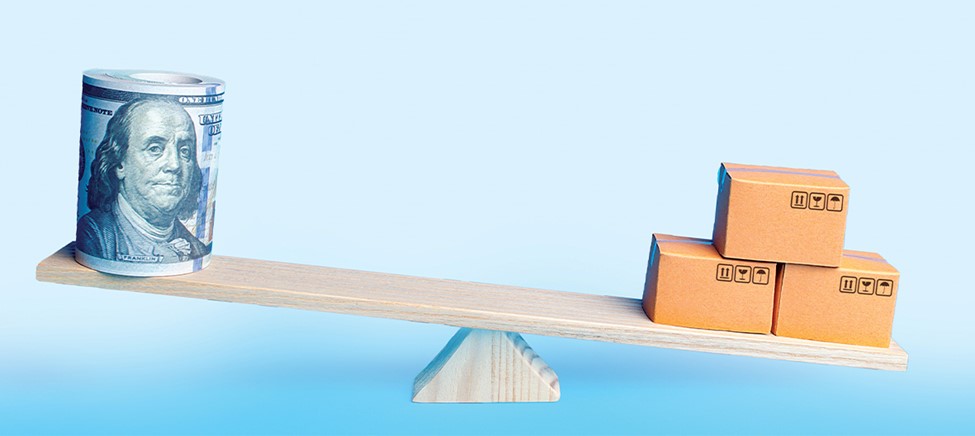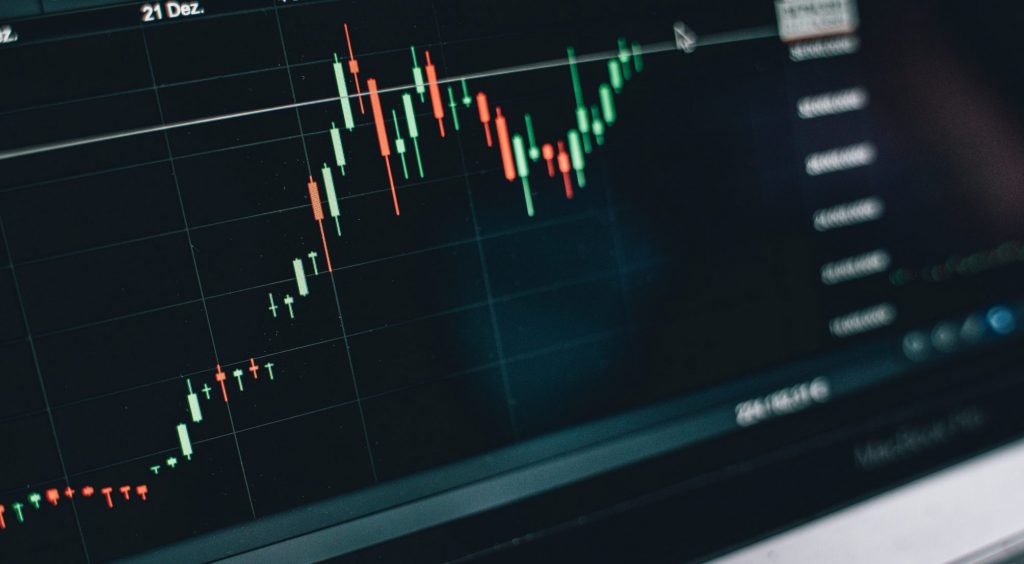Currency exchange rates, lending and GDP growth prospects worldwide are affected by what the U.S. Federal Reserve (Fed) decides during the eight times it meets annually to determine interest rates. “Interest rates in the U.S. economy … influence interest rates throughout the global economy as a whole,” said Brian O’Connell, a contributor to Forbes, in February. “The [Fed’s] mission is to keep the U.S. economy humming — not too hot, not too cold, but just right.”
Interest rates in the United States increased from 0.5% in January 2022 to 4.5% by the end of the year to combat inflation, which cooled from 9.1% in June to 6.5% in December. “Our work is not yet done,” said John C. Williams, president and CEO of the New York Fed, in a speech at the New York Bankers Association held on Feb. 14. “Inflation is still well above our 2% target, and it is critically important that we reach that goal.”
“Most of the interest rate hikes [are] in the rearview mirror, but U.S. central bankers aren’t yet done making it more expensive to borrow money,” said Sarah Foster, U.S. economy reporter for Bankrate, a financial and news platform.
Rate increases will likely be “slower and more deliberate,” said Foster. That was evident in the Fed’s February meeting when they raised rates by 0.25%, the smallest increment since the first increase in March 2022 doubled the rates from 0.25% to 0.5%.
Two metrics remain a concern for 2023. First, the unemployment rate has dropped despite the monetary tightening intended to slow GDP growth. Unemployment decreased from 4% in January 2022 to 3.4% in January 2023 — the lowest level since 1969. “The way the Fed policymakers are thinking about inflation is that it all emanates from the labor market,” said Karl Smith, a Bloomberg columnist and former vice president for federal policy at the Tax Foundation, in a Feb. 14 op-ed.
The other worry is retail sales continue to rise despite higher prices and interest rates designed to encourage savings.
For Egypt, the impact of the Fed goes beyond simple monetary policy: It affects the government’s fiscal health and foreign currency inflows from exports to the U.S. — Egypt’s biggest buyer of goods, according to the central bank (CBE).

Running hot
Williams blamed the war in Ukraine and governments pushing for fast GDP growth after COVID-19 for the rise in prices worldwide and, ultimately, the Fed’s monetary tightening. A further complication is the supply of goods from international markets has been unreliable as freight bottlenecks crippled international trade, decreasing supply in foreign markets just as demand ramped up.
That meant American businesses had to invest in upscaling operations and saw new opportunities to meet increasing demand, resulting in higher-than-expected employment levels. “Non-farm payrolls … nearly doubled in January, with the U.S. economy adding more than half a million jobs — up from 223,000 in December,” Alexandra White, a Financial Times reporter, said in February.
That only fueled inflation in the United States. “To attract and retain employees, employers have boosted wages,” according to a February research note from U.S. Bank Asset Management Group. “Recent reports show compensation costs for workers rose 5.1% in 2022.”
In January, retail sales, including food and fuel, increased by 3% compared to December. That is a “sharp” increase, said White of the Financial Times. “American consumers have not pulled back spending on discretionary items despite high inflation.”
The 2023 Fed
Williams of the New York Fed stressed in his February speech at the New York Bankers Association that “when it comes to monetary policy, we must restore balance to the economy and bring inflation down to 2% on a sustained basis.”
Foster of Bankrate believes “policymakers could raise interest rates 5% to 5.25% [up from the current 4.75%] before all is said and done.” A Bankrate survey found “seven Fed officials [see] a scenario where rates could rise even higher than that, with the most aggressive forecasts penciling in a 5% [to] 5.75% target range, the highest since 2000.”
Foster said those hikes likely would happen over the next two Fed meetings, each increasing rates by 0.25%. The Economist Intelligence Unit (EIU) said in its Global Monetary Policy Outlook 2023 that the Fed will reach its “peak target range of 5% to 5.25% [by] May.”
Economists aren’t worried. Foster reported, “Even if the Fed’s highest forecasts come to fruition. It shows that, at most, only 1 percentage point of rate hikes are on the table for the year.”
Williams said the key to ending monetary tightening would likely be the decline in the prices of non-energy services. “It is influenced by supply and demand,” said the Fed official, adding that during the second half of 2022 the non-oil services inflation rate was between 3% and 3.75%.
A second critical factor is the Fed’s ability to “anchor inflation expectations,” Williams said, which would provide a “North Star” for policy decisions. The Fed’s most recent Survey of Consumer Expectations showed “three-year-ahead inflation expectations are now where they were before the sharp increase in inflation that started in 2021,” said Williams. “One-year-ahead expectations have trended down since the middle of last year.”
He stressed that future interest rate decisions “will take into account the cumulative tightening of monetary policy, the lags with which monetary policy affects economic activity and inflation, and economic and financial developments.”
Even if retail sales and employment decline in 2023, interest rates will not likely decrease. The EIU report pointed out that “although inflation is likely to ease steadily … by mid-2023 … we expect interest rates to stay at peak levels for some time — until mid-2024, at least. For now, we expect the Fed … to manage to tame inflation.”
Risks ahead
Manipulating GDP growth drivers to bring inflation down quickly comes with risks. Bill Dudley, a Bloomberg opinion columnist and senior adviser to Bloomberg Economics, points to several things that could go wrong for the Fed in 2023.
“Economic growth could prove more persistent than expected,” Dudley wrote in a January analysis in the Washington Post. That would be a continuation of what happened last year. “The economy expanded much faster during the second half of 2022 than during the first,” he said.
Dudley also noted Social Security and disability benefits increased by 8.7% for 2023, benefiting about 70 million recipients or a fifth of the U.S. population. Medicare Part B insurance premiums also declined a bit for 2023 “because hikes implemented in 2022 turned out to be considerably higher than needed.”
That means more money in the pockets of Medicare and Social Security recipients, which might accelerate spending and employment as businesses invest to meet increasing demand.
Another risk is inflation levels might be due to temporary factors such as COVID-19 stimulus checks in 2020 and 2021 and the war in Ukraine. “Inflation was always likely to be largely transitionary,” said Dudley. “If you were willing to ignore transitionary goods price pressures on the way up, you also need to ignore them on the way down.”
That means price movements, particularly for food, will be volatile and not determined by the Fed’s monetary strategy. “The Fed … may become too enthralled by the drop in goods inflation,” Dudley said. However, it may “move back to a higher trend in 2024 and beyond.”
He also cited global risks shaping the U.S. monetary policy in 2023. The first is energy security and prices, he said. “Here, there are a lot of moving parts.” The big two are whether Vladimir Putin “decides to weaponize Russian oil production,” Dudley said. The other is “the end of China’s zero-COVID policy [which] could depress, then spur, demand for energy.”
The fallout
With the Fed’s ongoing monetary tightening policy, it is unlikely rates will decrease before mid-2024, according to the EIU. That would hurt the U.S. government and banks. “The squeeze on government finances [as the Fed’s interest rates determine the yields on government borrowing] will be exacerbated by a sharp rise in the cost of the Fed’s liabilities,” said Dudley.
He said maintaining the Fed’s interest rates “would cause the central bank’s income to fall” from a profit in 2021 to a loss in 2023. “A fiscal crunch and bond market turbulence seems inevitable at some point.”
The other talking point among U.S. economists is whether the country needs to go into recession (defined as two consecutive quarters of GDP contraction) to temper inflation. Brandywine Global’s portfolio manager Bill Zox told CNBC in February the Fed isn’t even trying to avoid a recession to decrease inflation. “While they would never say so, they might prefer the restorative aspects of a recession and a proper bear market,” he said.
Williams of the New York Fed said in his February New York Bankers Association speech that he “expects real GDP growth to come in around 1% for 2023.”
However, a U.S. Bank Asset Management Group research note said current policies likely would lead to a recession, estimating the odds at 64% in 2023. The Bankrate report noted, “two of the past three tightening cycles ended in recessions and the one that didn’t was an economic slowdown, where they had to reverse course and start cutting rates. History is not on their side.”
That would be problematic for most emerging markets that mirror the Fed’s interest rate hikes to prevent foreign currency outflows to the United States. That applies to countries that want to preserve their local currencies’ peg to the dollar (Gulf Cooperation Council members, for example) and those with floating or semi-floating exchange rate policies. Raising interest rates high enough in the United States to cause a recession would increase the likelihood of recession or stagnation in emerging economies.
Egypt under pressure
In Egypt, the Central Bank (CBE) wants to avoid a recession scenario. In its February monetary policy meeting, the CBE decided not to follow the Fed’s lead and raise rates. That didn’t sit well with portfolio investors. Edwin Gutierrez, head of emerging-market sovereign debt at U.K.-based investment firm Abrdn, told Bloomberg: “We think it’s a policy mistake and definitely has caused some investors to rethink.”
Goldman Sachs published an investor note saying the CBE’s pause “may have interrupted the recent momentum of policy decisions, which have been tentatively recreating the conditions for an attractive carry trade [investors buying treasury debt or stocks for a short period] in the pound.”
Perhaps more importantly, a recession in the United States would invariably hurt Egypt’s exports as demand for goods declines in the world’s biggest economy. The CBE says the United States was the number one country buying Egyptian goods in the fiscal years 2020/2021 and 2021/2022. It accounted for nearly 10% of all Egyptian exports each year. “The weakening growth of [U.S.] markets could [reduce emerging market] current account surpluses and forex reserves,” Clarence Wong, chief economist at PeakRe, a think tank, wrote in July. “Financial stresses will be mainly manifested in increasing debt stresses on emerging markets, leading to more defaults and restructuring.”







